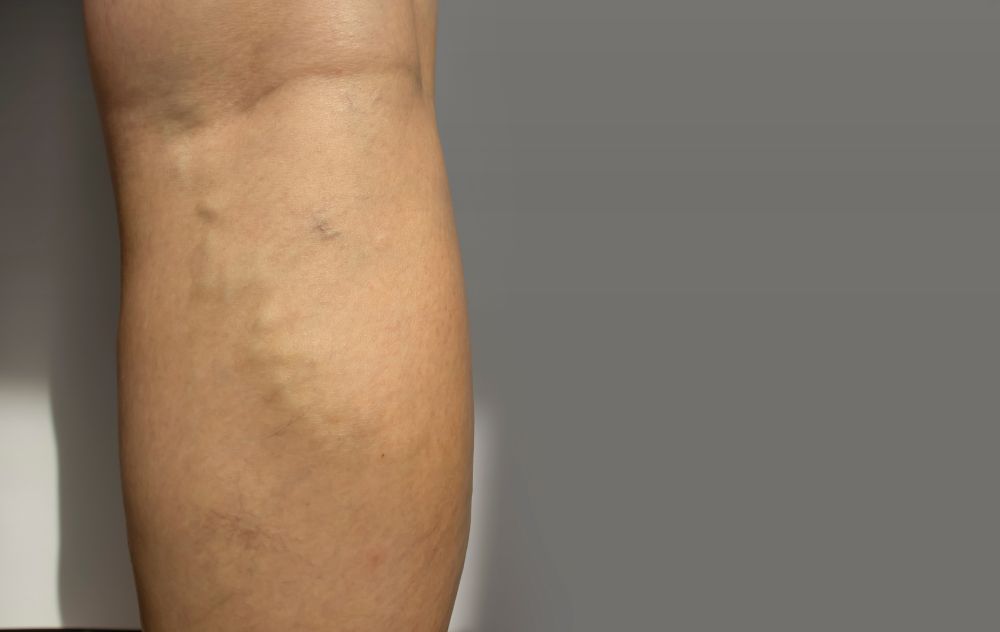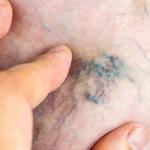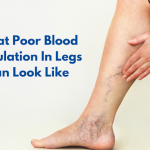
When you notice a vein on your leg or arm that looks swollen, raised, or tender, it’s normal to worry — could it be a blood clot? While both conditions involve your veins, a swollen vein and a blood clot are not always the same thing. Understanding the difference is essential to protect your health and know when to seek medical care.
What Causes a Swollen Vein?
A swollen or bulging vein is often caused by poor circulation or venous insufficiency — a condition where the valves in your veins stop working properly, allowing blood to pool. Over time, this can lead to varicose veins or spider veins that appear twisted, raised, or discolored.
Common causes include:
-
Standing or sitting for long periods
-
Pregnancy or hormonal changes
-
Obesity
-
Aging
-
Family history of vein disease
While swollen veins are usually not life-threatening, they can be a sign of chronic venous insufficiency (CVI) — a progressive condition that can lead to complications like leg swelling, skin discoloration, and even ulcers if left untreated.
When Swelling Could Mean a Blood Clot
A blood clot in a vein is called deep vein thrombosis (DVT). This is a more serious condition that can block blood flow and cause potentially life-threatening complications if the clot travels to your lungs (pulmonary embolism).
Unlike varicose veins, which are visible on the surface, DVT often occurs in deeper veins and may not be visible at all.
Symptoms of a blood clot include:
-
Sudden swelling in one leg (or arm)
-
Warmth or redness around the area
-
Pain or tenderness, especially when walking or standing
-
A feeling of heaviness or tightness in the limb
If you suspect you may have a blood clot, seek immediate medical attention. A simple ultrasound can confirm the diagnosis and help guide treatment.
How to Tell the Difference Between a Swollen Vein and a Blood Clot
| Feature | Swollen/Varicose Vein | Blood Clot (DVT) |
|---|---|---|
| Appearance | Visible, twisted, raised veins | Usually not visible |
| Pain Level | Mild aching or heaviness | Sharp or throbbing pain |
| Location | Surface veins (legs or feet) | Deep veins (legs, thighs, pelvis) |
| Skin Changes | Blue, purple, or bulging veins | Redness or warmth without visible veins |
| Urgency | Medical evaluation recommended | Requires urgent medical care |
Can a Swollen Vein Turn Into a Blood Clot?
Yes — while not all swollen veins become clotted, varicose veins can increase your risk of developing superficial thrombophlebitis, a condition where a clot forms in a surface vein. In rare cases, this can progress to DVT, particularly if untreated. That’s why it’s important not to ignore chronic vein symptoms like swelling, pain, or discoloration.
Treatment Options for Swollen Veins
At USA Vein Clinics, our vein specialists diagnose and treat the underlying cause of vein swelling using minimally invasive, non-surgical treatments performed right in our clinics.
Treatment options may include:
-
Endovenous Laser Therapy (EVLT)
-
Varithena® Foam Treatment
-
Ultrasound-Guided Sclerotherapy
-
ClariVein® Treatment
These procedures close off damaged veins and reroute blood flow to healthy ones, relieving swelling, improving circulation, and restoring comfort — often in less than an hour.
When to See a Vein Specialist
If you notice:
-
Persistent swelling or heaviness in your legs
-
Visible, bulging veins
-
Skin changes (redness, itching, or darkening)
-
Pain or cramping that worsens at night
It’s time to see a vein doctor for an accurate diagnosis. Early evaluation can prevent serious complications and help you feel better, faster.
Take the First Step Toward Healthier Legs
Don’t ignore swollen veins or leg discomfort. Schedule a consultation at USA Vein Clinics today to find out what’s behind your symptoms and explore your treatment options.





